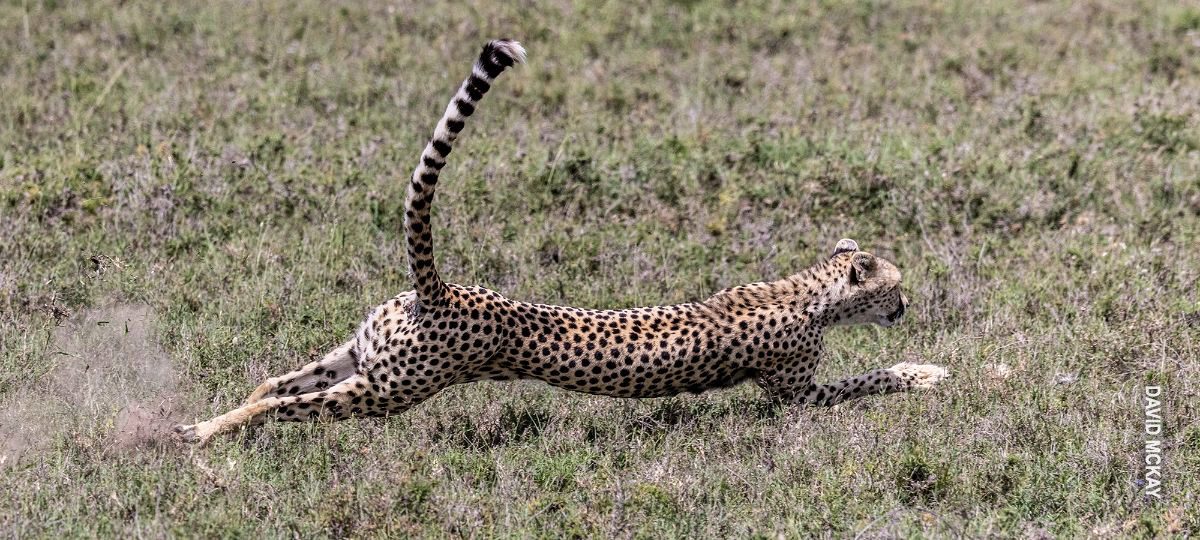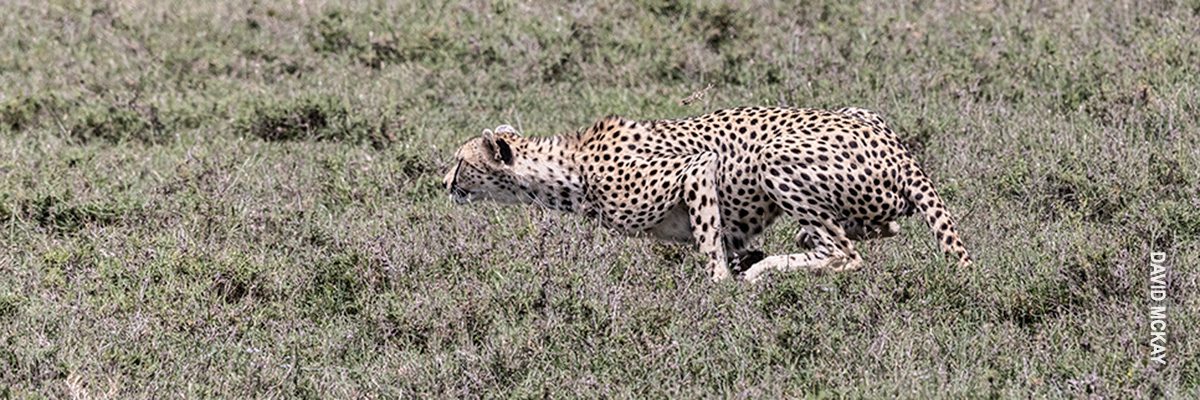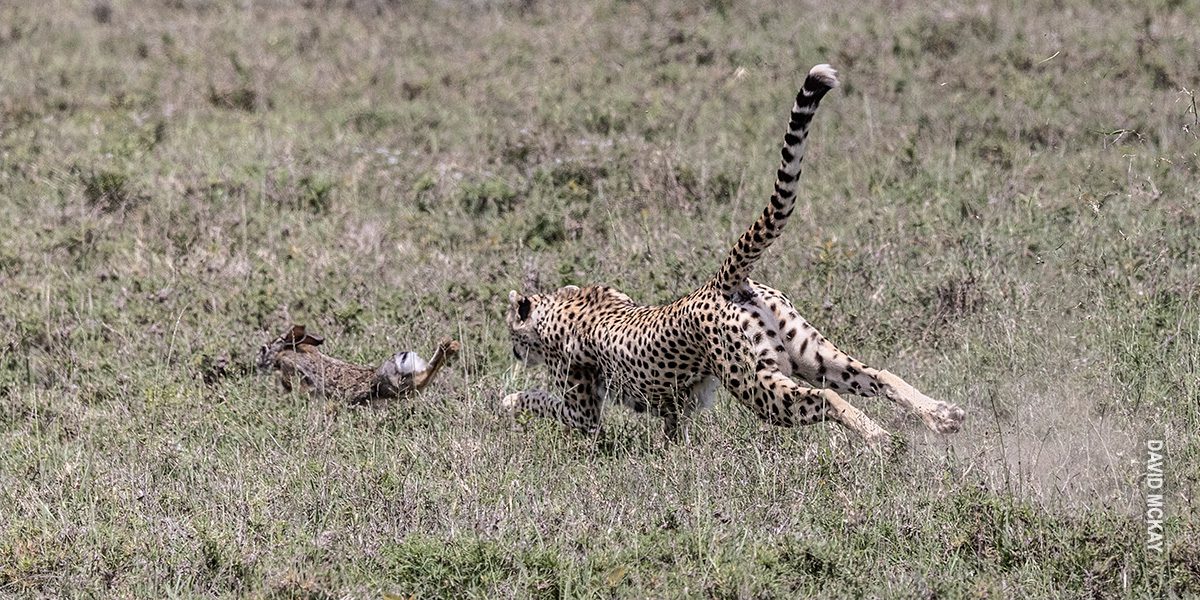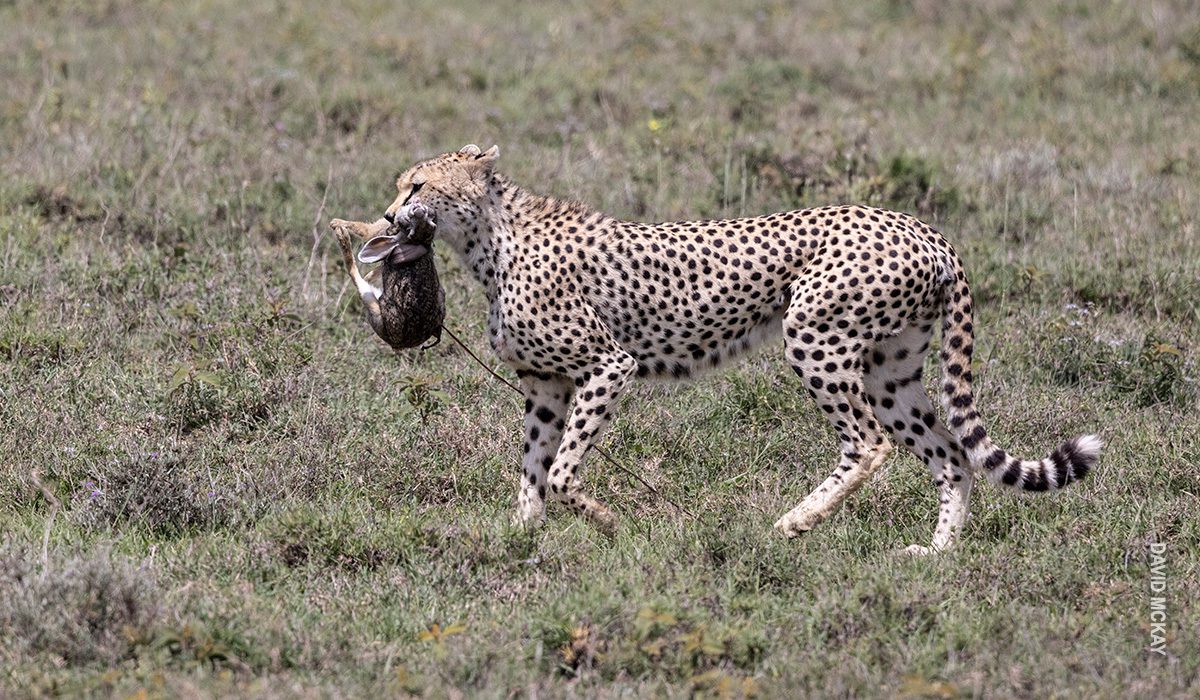10 Safari Photography Tips with David McKay
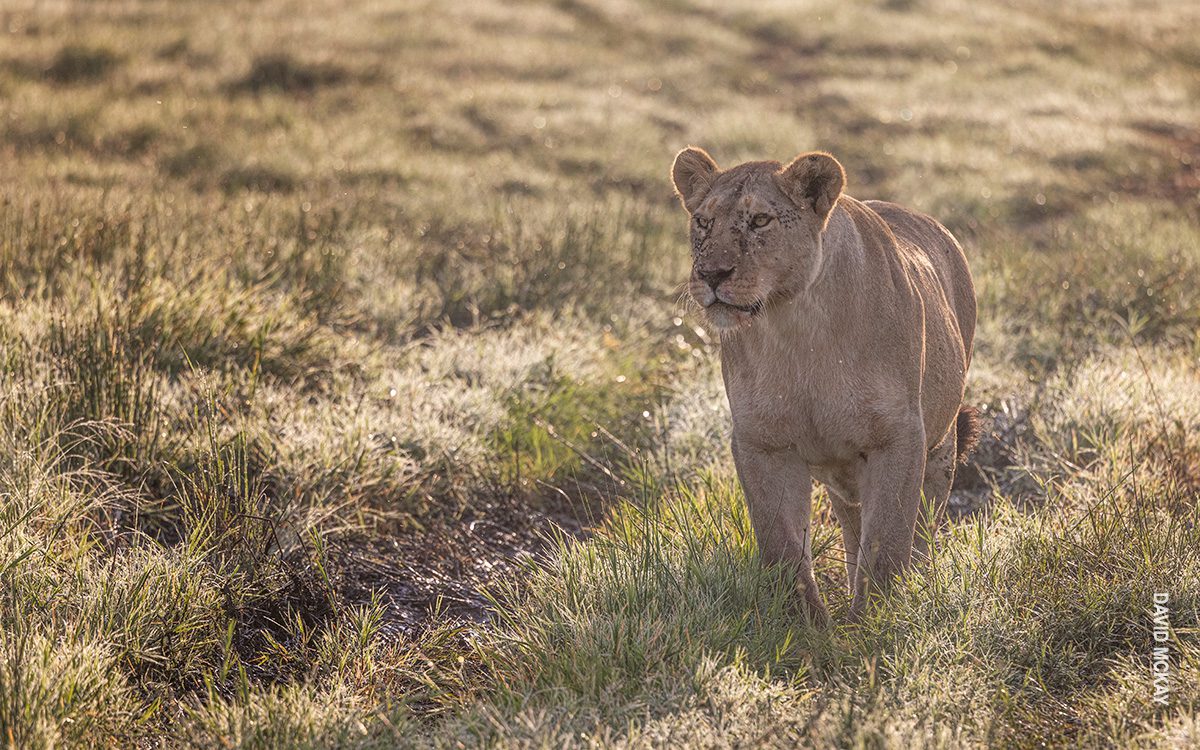
With a quick trigger finger, some good light and the right know-how, anyone can take memorable photos on safari. Professional photographer and Thomson trip leader David McKay of McKay Photo Academy knows this well; he recently returned from safari after capturing some incredible shots–and helping other photographers capture some, too.
Here are 10 safari photography tips from David McKay to help you strengthen your own safari photos–or photos of any kind!
Photo Tip 1: Use Landscape in Storytelling
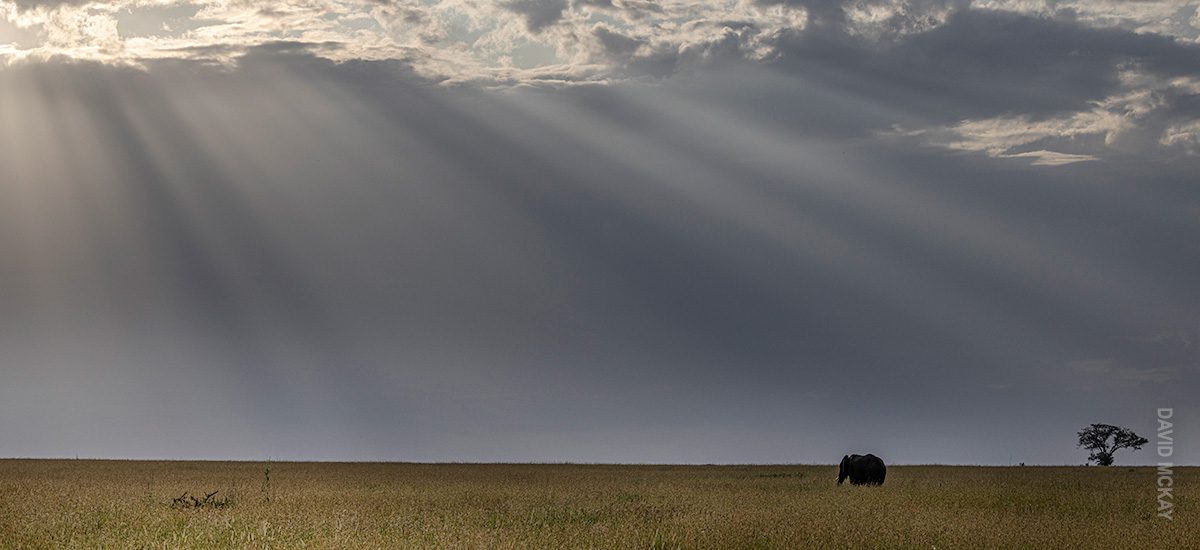
Do not forget the essential aspects of photography for storytelling. Leaving space and using the landscape to share the “story” is just as vital as a close-up. In this case, the lone elephant walking off into the sunset was the perfect end to our first day! It is easy to only want to take close-ups of subjects. On safari, of course, you want close-up images of wildlife.
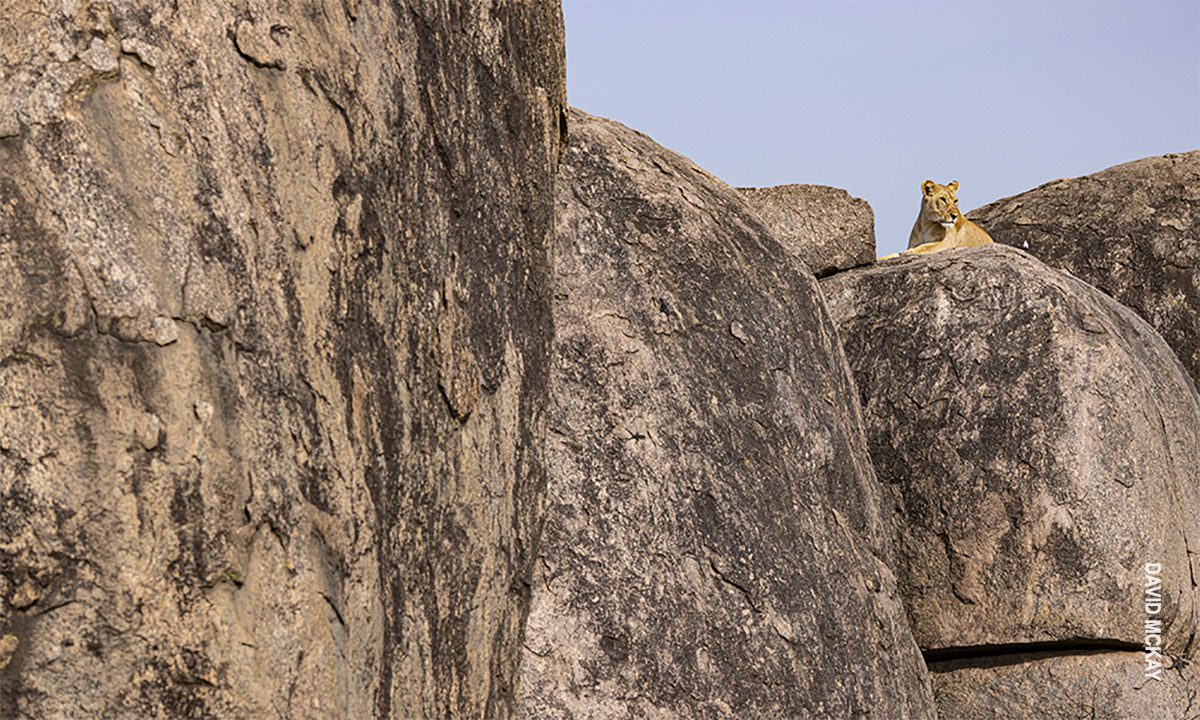
In this scene, I photographed this lioness from many angles. There were actually five lions here on these rocks. From many angles, you could see one or two faces, but then just parts of the others and it wasn’t a great shot.
By moving our vehicle and allowing the huge rock formation to be a part of the scene, it becomes much more dramatic and a part of the landscape, telling a much better story of the area. Notice the image was shot with the foreground leading to the lion. I had the vehicle positioned for us to shoot this way on purpose.
Photo Tip 2: Balance Shutter Speed and Camera Shake
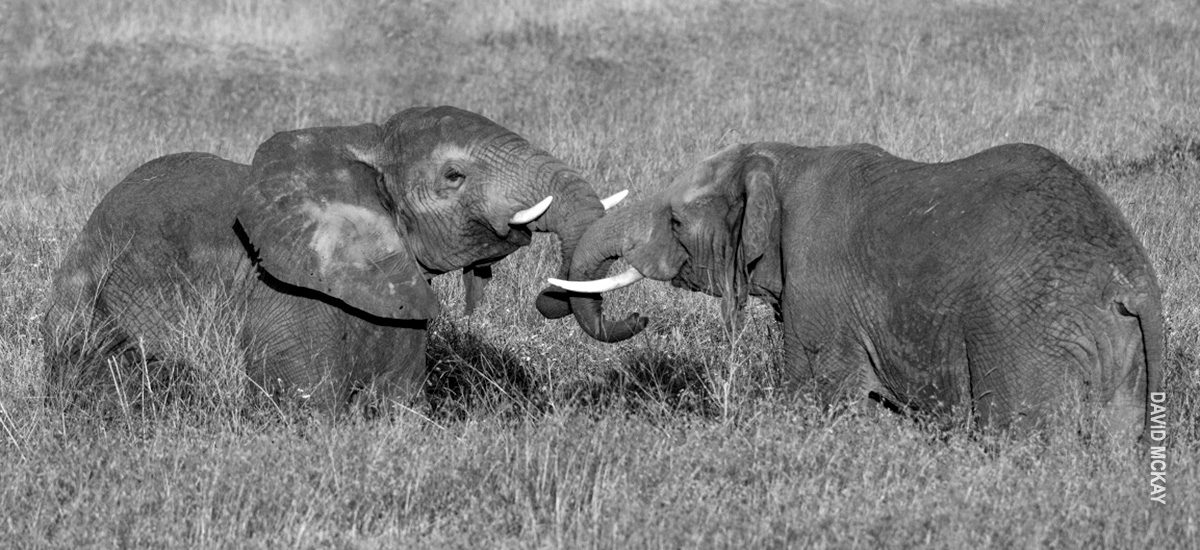
This image may look great to you. A moment was captured for sure. As a professional, I am always working to get the best images not only technically, but with emotion and storytelling.
I am very happy I captured this image, but unfortunately, it is not super sharp. What happened?
While photographing these two elephants, the light was getting darker and darker. We were at dusk. I was trying to keep my ISO from getting extremely high with having to use a high shutter speed to capture the action.
I decided to “fudge it” and try to keep my shutter speed down so my ISO was not so high (800). I shot this at 1/640th of a second. But in doing so, I lost some sharpness due to their movement, as well as my own, while holding a heavier long lens.
The general rule is: however long your lens is, double that for shutter speed if you are hand-holding to avoid camera shake. I had a 100-500mm lens on. So really, I should have been at 1/1,000th of a second as a minimum.
I should not have sacrificed so much, and would have been better with the higher ISO, which would have meant a little more “noise” but would have resulted in a sharper image. It is always a balancing act!
Photo Tip 3: Find Your F-Stop
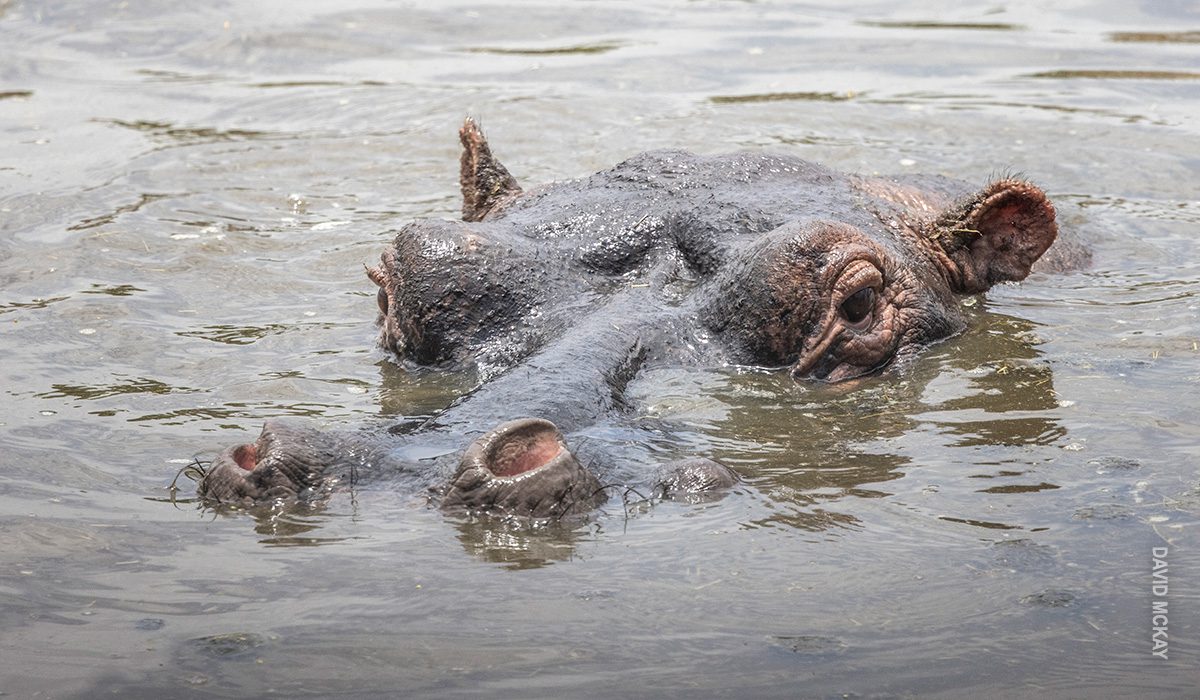
In an image such as this close-up of the hippo, it is also very important to make sure you have a decent aperture/f stop setting in order to get a good depth of field.
Here, I increased my f-stop to f/9 in order to make sure that the hippo was sharp all the way from the front to the back. A smaller stop could have resulted in the depth being shallower and falling off toward the back of the head.
Photo Tip 4: Underexpose on Sunrise Shots!
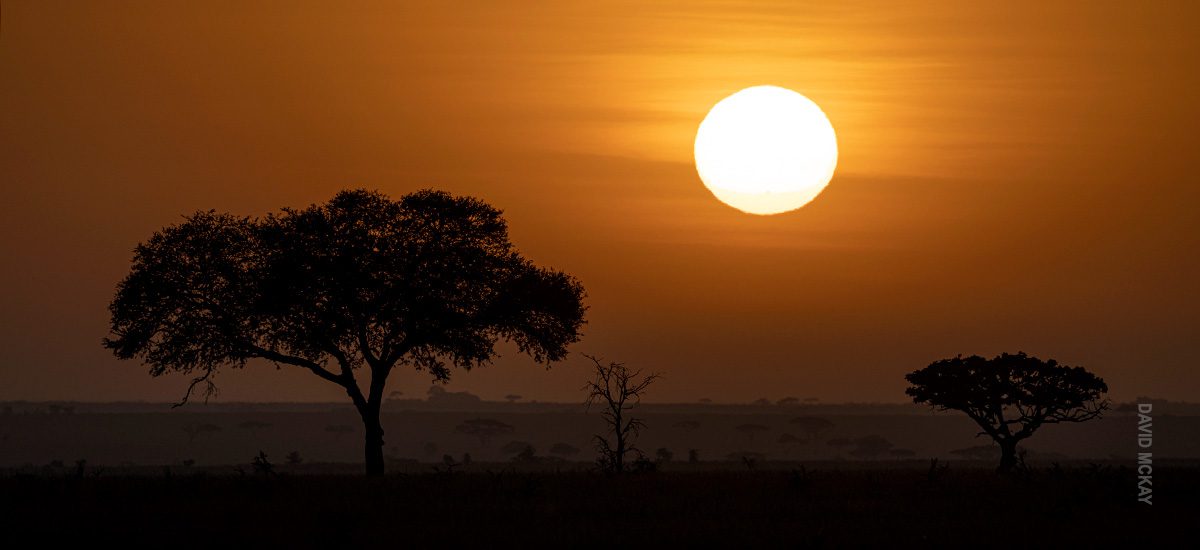
There is nothing quite like an African sunrise and sunset. Being so close to the equator results in stunning displays of a huge sun ball in the sky!
It is important to understand that you have to be up and going BEFORE sunrise. Here, the sun hits the horizon, and from that point to this image is literally about two minutes, max.
When shooting an image like this, the idea is to silhouette the foreground. It is not so much about the detail in the foreground but rather the impact and mood of the image.
The mistake people make is that they try to get the proper exposure lined up. However, what you need to do is UNDEREXPOSE what the meter tells you by quite a bit. In this image, I am shooting at 100 ISO, f/8, and a fast shutter speed of 1/4,000th of a second. I am on FULL MANUAL, as I do not want the Auto ISO to keep lining up the meter to what it thinks is correct.
My light meter showed as EXTREMELY underexposed. But this is because the meter is taking into account this huge bright sun in the sky, and if I exposed the shadows of the trees as an example, the sky would be completely blown out.
The fast shutter speed was my way of reducing light. It had nothing to do with action. I could have also reduced light with the f-stop, but f/8 is a nice, sweet-sharp spot on my lens.
Photo Tip 5: Use the Best Vehicles for Safari Photography
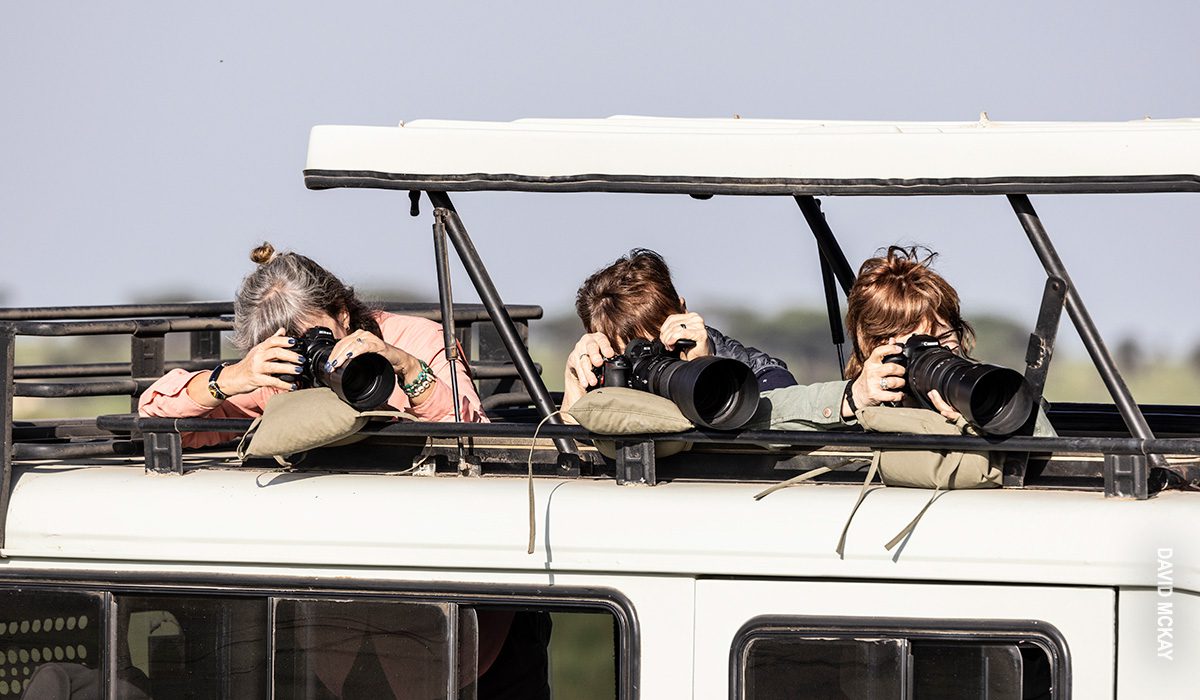
No matter how steady you think your hands are, how good your lens or camera stabilization is or how fast your shutter is, the reality is that in a moving vehicle traveling in an unstable environment can affect whether your images are tack sharp or not.
On safari, we always use specially designed vehicles with a maximum of four photographers in them for elbow room and to allow “bean bags” to be placed on the roof rack, helping you stabilize the camera. This is a trick that works in other situations as well.
Photo Tip 6: Take It In, Understand the Process, Shoot the Scene
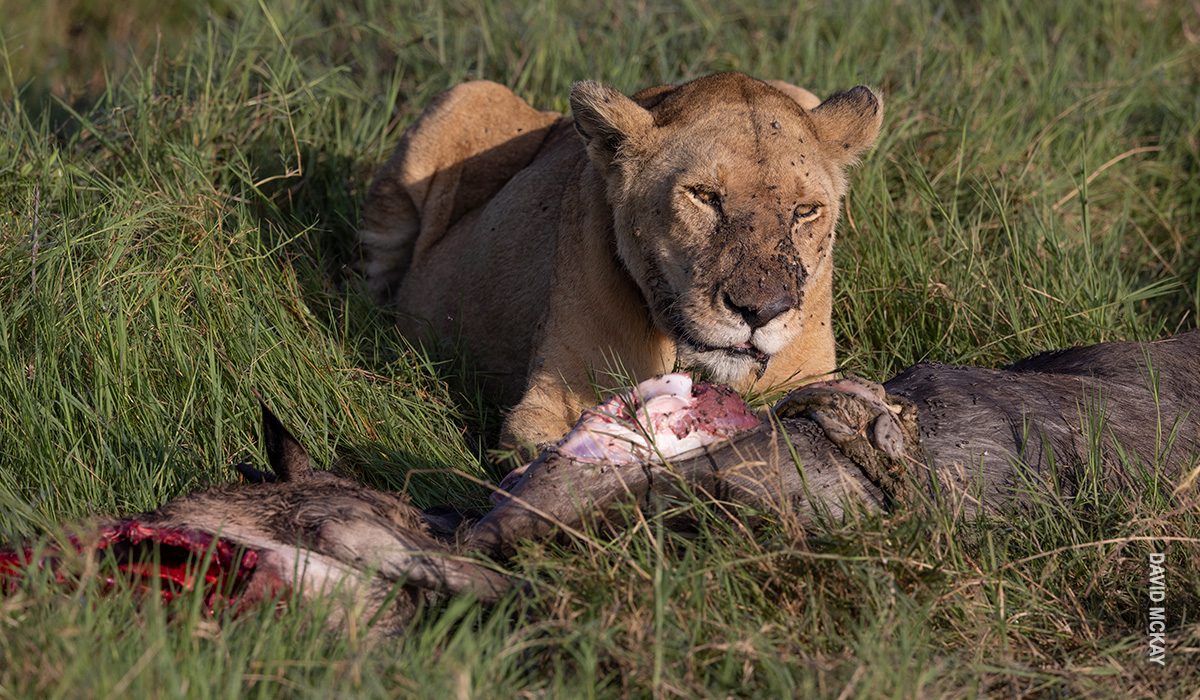
In the wild, a “kill” is a necessary part of the ecosystem. It must happen for everything to work. Everything from plant life, herd numbers, food portions and sustainability are all based on an ever-revolving circle of life.
That doesn’t make it easy to watch. Although it can be tough, try to take it in, understand the process, shoot the scene.
This mother lion has the fresh remains of a wildebeest AND baby. The lioness had a wound around her neck. Our guides believed the two sisters (her daughters) probably did the hunt, brought to mom. While she is healing up, they will fiercely protect her from danger–that includes the two young teenage brothers that may try to take the meat.
Photo Tip 7: Morning and Evening Light Matters
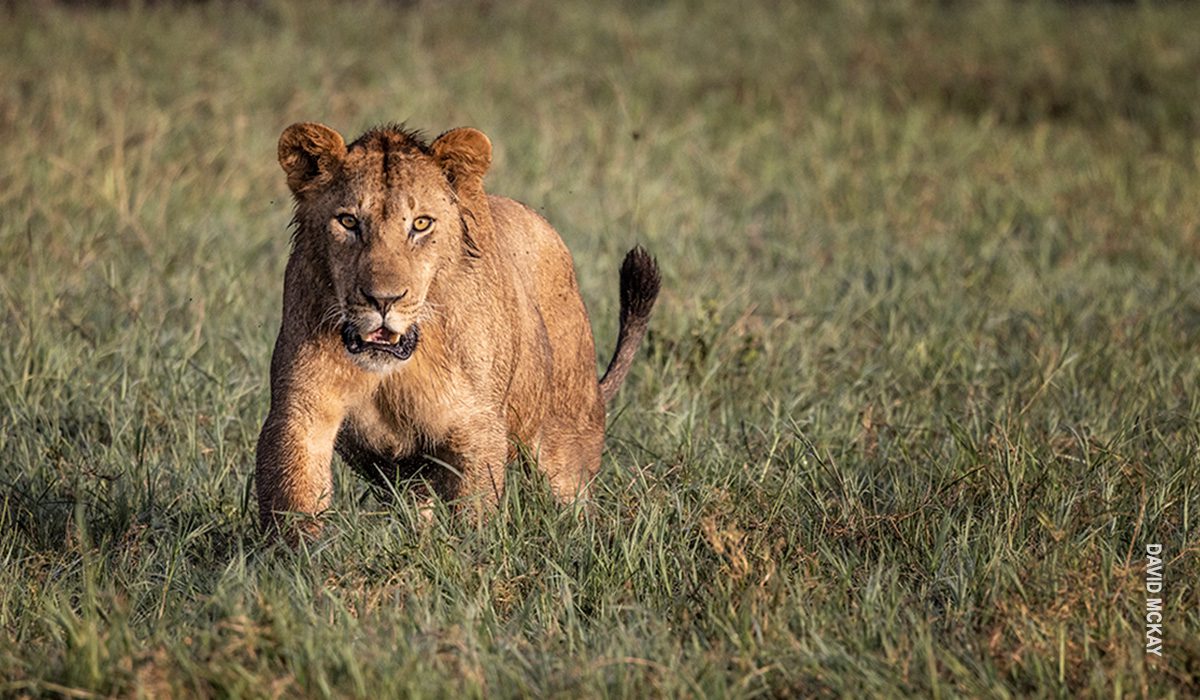
Here, one of the young males makes his move towards a kill. Notice the beautiful golden warm light. This is such a difference having this in the early morning or late hour evening times and produces a quality of light that makes a huge difference in your images.
With wildlife photography, it is also imperative to get up and out before sunrise so that you can be ready for the morning action, because that’s when animals are awake and ready to go.
Please also note the use of the Rule of Thirds in this image! Rather than the lion being placed directly center, by placing him on the left third with his body leaning to the right, it creates a stronger balance and “movement” to the image.
1/3,200th of second – f/71 ISO 1000
Photo Tip 8: Cheetahs Need a High Shutter Speed
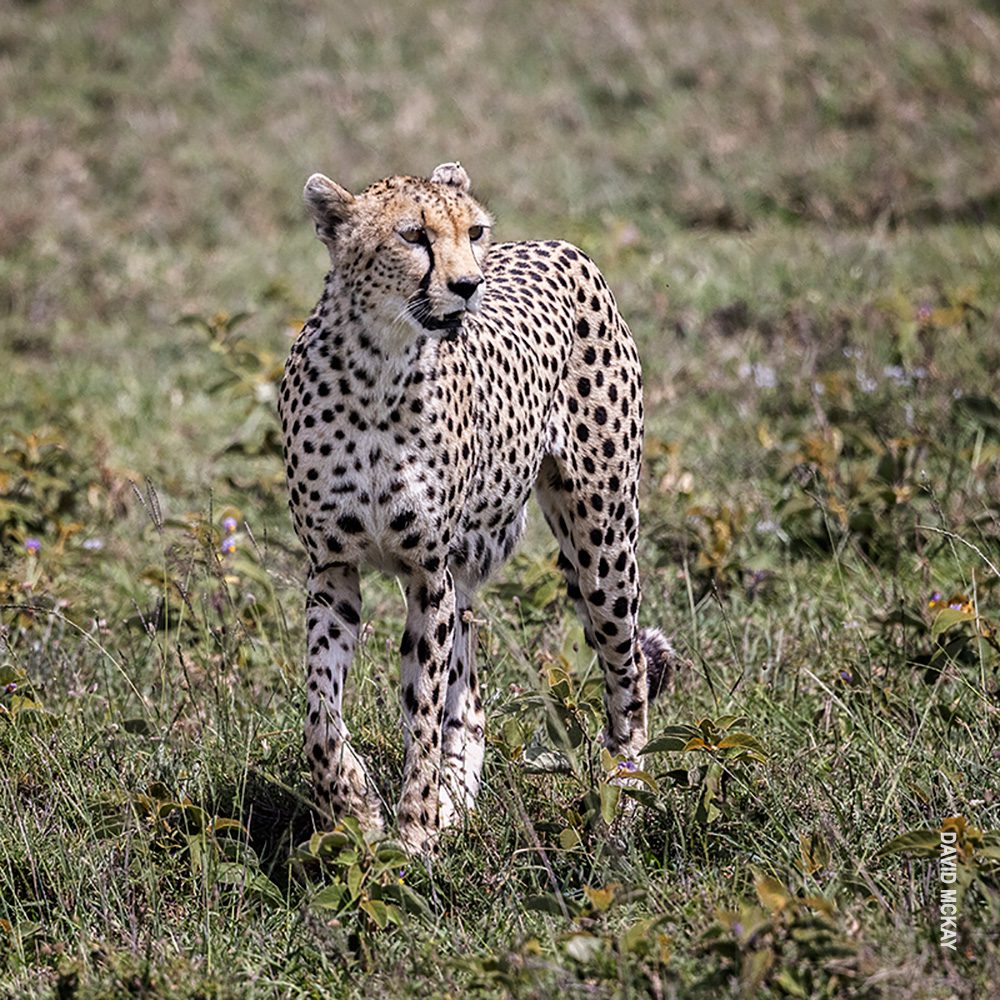
When photographing an animal like the cheetah–the fastest animal on earth, that can run, in a split second, to over 80 miles per hour–you have to be READY at ALL times. You never know when action will break out.
If a cheetah is walking, he is usually hunting or at the very least, always ready for an opportunity that can present itself.
The MINIMUM shutter speed for an animal like this is 1/4,000th of a second. if it is plenty bright outside, I will even go to 1/8,000th of a second as my camera allows for this.
Photo Tip 9: Use Auto ISO for Wildlife and Quick Action
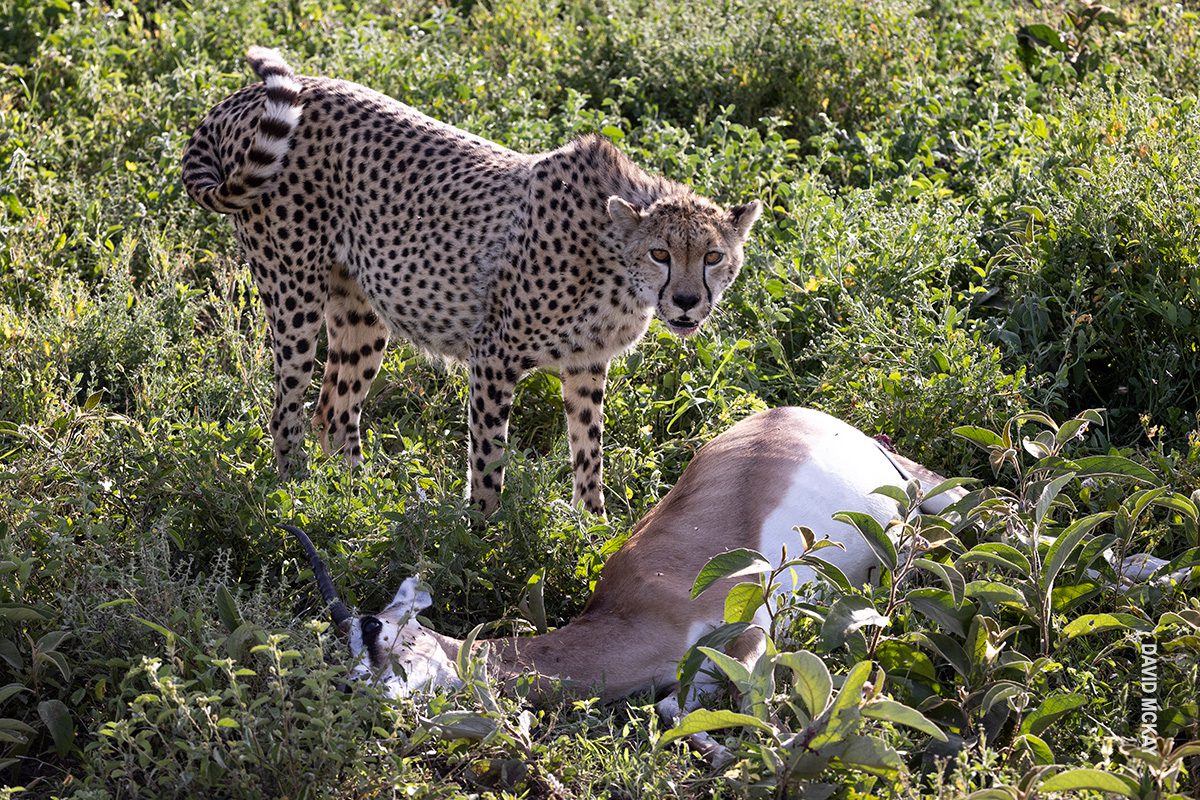
On our first day in Ndutu, our amazing guides spotted this cheetah off in the distance. As we arrived, we noticed she had just taken the gazelle. We were not there for the chase, but she had yet to start partaking in her lunch.
This is a moment where you have to think about everything quickly: shutter speed, ISO and aperture. Most of the time while photographing wildlife, I use Auto ISO and simply choose my shutter speed and aperture that I like while in manual mode.
The nice thing about this is that as I choose what I want and the ISO changes automatically to keep my exposure correct. It really simplifies things when in a rushed, exciting situation.
In this and the following images, I chose a higher aperture at f/11, just to make sure that I had plenty of depth of field. I still had a very fast shutter speed of 1/4,000th of a second, just to be ready in case other action happened. This forced my ISO up to 800. However, that is no problem for today’s modern cameras.
Photo Tip 10: Travel with the Best Guides
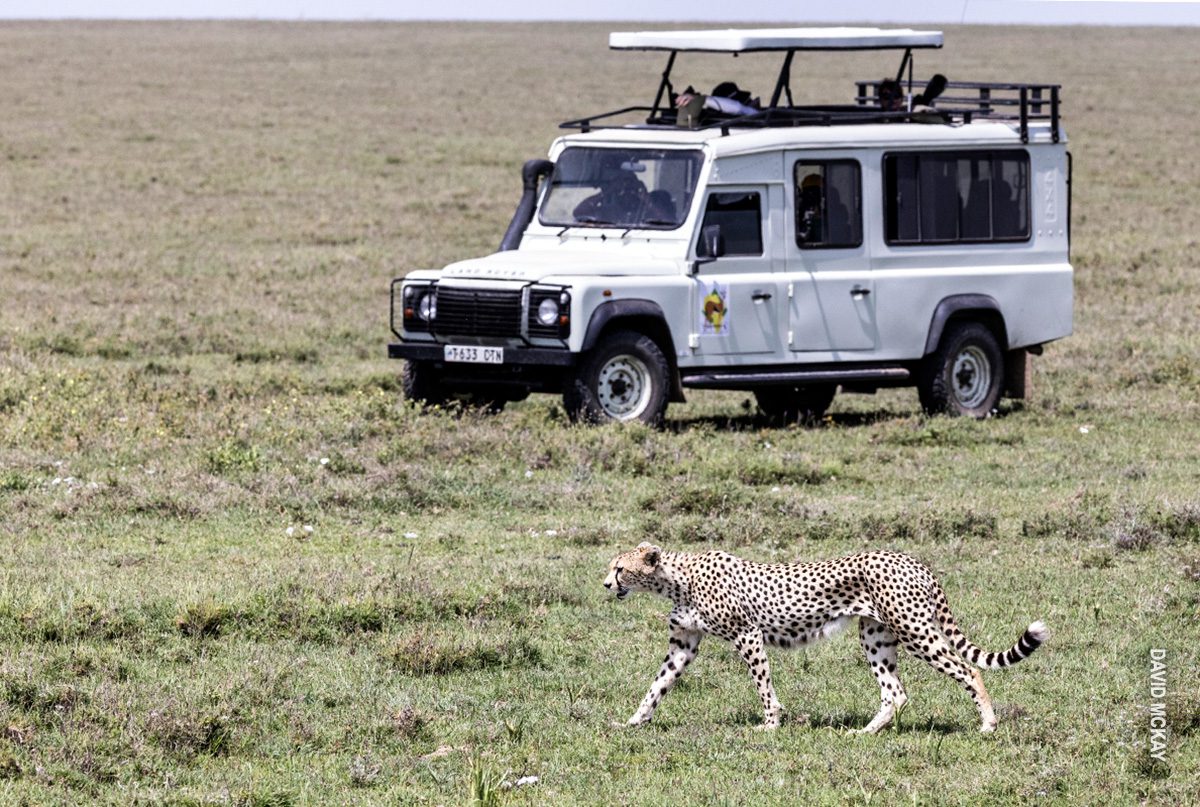
When photographing wildlife, always have your camera out, batteries charged and memory card space available…you never know what can happen!
I discussed our safari plans with Leonard, our dear friend and our head guide. I said, “Let’s spend time looking for more cheetahs!” The thing about cheetahs is that you have to cover an extremely large amount of area to find them, you need some luck involved, and most of all, you NEED THE BEST GUIDES!
This day, like some others, ended up being a 12-hour day. Sun-up to sundown, but oh my, what a day! After hours of searching, spending time with a lion pride and then photographing the Great Migration for a bit, we were on our own hunt for another cheetah.
Our three vehicles split up and over walkie-talkies we communicated. Each vehicle went a different direction on the hunt. Over the radio, we heard DUMA! (Swahili for Cheetah!) We raced over and found this lone cheetah out walking and looking for an opportunity. With animals like this, you need to give them space and not allow them to feel stressed or threatened by your presence.
After following her for about 10 minutes, we decided we should allow her to just go on her way without any fear of us bothering her. It was at that moment, her lunch appeared right in front of us!
An African hare jumped out of a hole maybe five feet from us and right in front of the cheetah. Amazingly, I was focused on her eye, I had the tracking focusing on, and I had a high-speed shutter burst on. I sprayed and prayed (slang for “shoot as fast as you can and hope for the best!”).
1/4,000th of a second high-speed burst, continuous focusing mode, with animal eye tracking on the Canon R5 really allowed me to capture this series. It all happened in less than five seconds.
